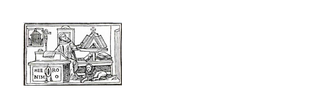Jerome, the "Old" Testament and the Jews

The project has three aims: a) Jerome and Jewish traditions in literature since around 1850 The subject "Jerome and the Jews" has been treated in literature repeatedly. The main interest was the question of Jerome's anti-Semitism (see, for example, the fascinating works by Heinz Schreckenberg). In addition, there is an emphasis on Jerome's knowledge of languages and on the question as to what extent he used Jewish sources first hand. The latter implies an inter-religious and intercultural exchange. Scholars of the "Science of Judaism" ("Wissenschaft des Judentums"), especially Moritz Rahmer, had pointed to that exchange in the 19th and early 20th centuries, but Christian scholars seldom read their works. One of the questions which is still disputed is how well Jerome spoke Hebrew and to what extent he worked together with rabbis. One rabbi with whom he is said to have worked together is R. Berechja. This leads to the general question of Jerome's relationship to Jews. b) The use of Jewish sources in Jerome's Bible commentaries Jerome used Jewish sources, sometimes with reference to their authors. It is possible to try to identify these sources, but here we do not intend to write an overall survey. Instead the work shall deal with examples. The main emphasis will be on a few references in Jerome's commentaries connected with the question of the image of Jews he paints. Additionally research shall be done on the use of Biblical phrases and Biblical passages that are quoted throughout Jerome's oeuvre, e.g. the Biblical figure of Melchisedek or concepts developed in discussion with Jewish (and pagan) contemporaries such as purity. c) Survey of the "Wirkungsgeschichte" of Jerome's commentaries and his contribution to the cultural transfer On the basis of the aforementioned sample comments on biblical texts, the Wirkungsgeschichte [on that term see G.K. Hasselhoff, "A postscript note on the term Wirkungsgeschichte", in: id. / O. Fraisse (eds.), Moses Maimonides (1138-1204), his religious, scientific, and philosophical Wirkungsgeschichte in different cultural contexts, Würzburg: Ergon 2004, 633f] shall be portrayed, e.g. using authors such as Bede the Venerable Sedulius Scottus, Nicolas of Lyre, Martin Luther, and John Calvin.
The research planned on Jerome's use of Jewish traditions aims to show that his exegesis did not occur only in a cave in Bethlehem but also in real-life discussion with his Christian and Jewish contemporaries. But this in turn gives rise to the question as to whether the separation of the two religions was only a desideratum of the Synod of Nikaia in 325 or an actual reality. Or, in other words, is Jerome's Christianity thinkable without contemporary Judaism? And vice versa: Does Jerome's treatment of Judaism give insights into non-canonical forms of Judaism? May Jerome be seen as a source of now lost Jewish traditions? Are Christianity and Judaism static or dynamic? A second aim is the description of the Wirkungsgeschichte of Jerome's exegesis, which was of some importance for subsequent generations up until the Reformation. What was its relevance for the Christian view of Judaism? To what extent can traces of Jewish exegesis, as taken up by Jerome, be found in later tradition? Due to his importance for research on both Christianity and Judaism at the turn of the fifth century, the Church Father is a source for the cultural transfer throughout the ages. This, too, will be shown by our research.

